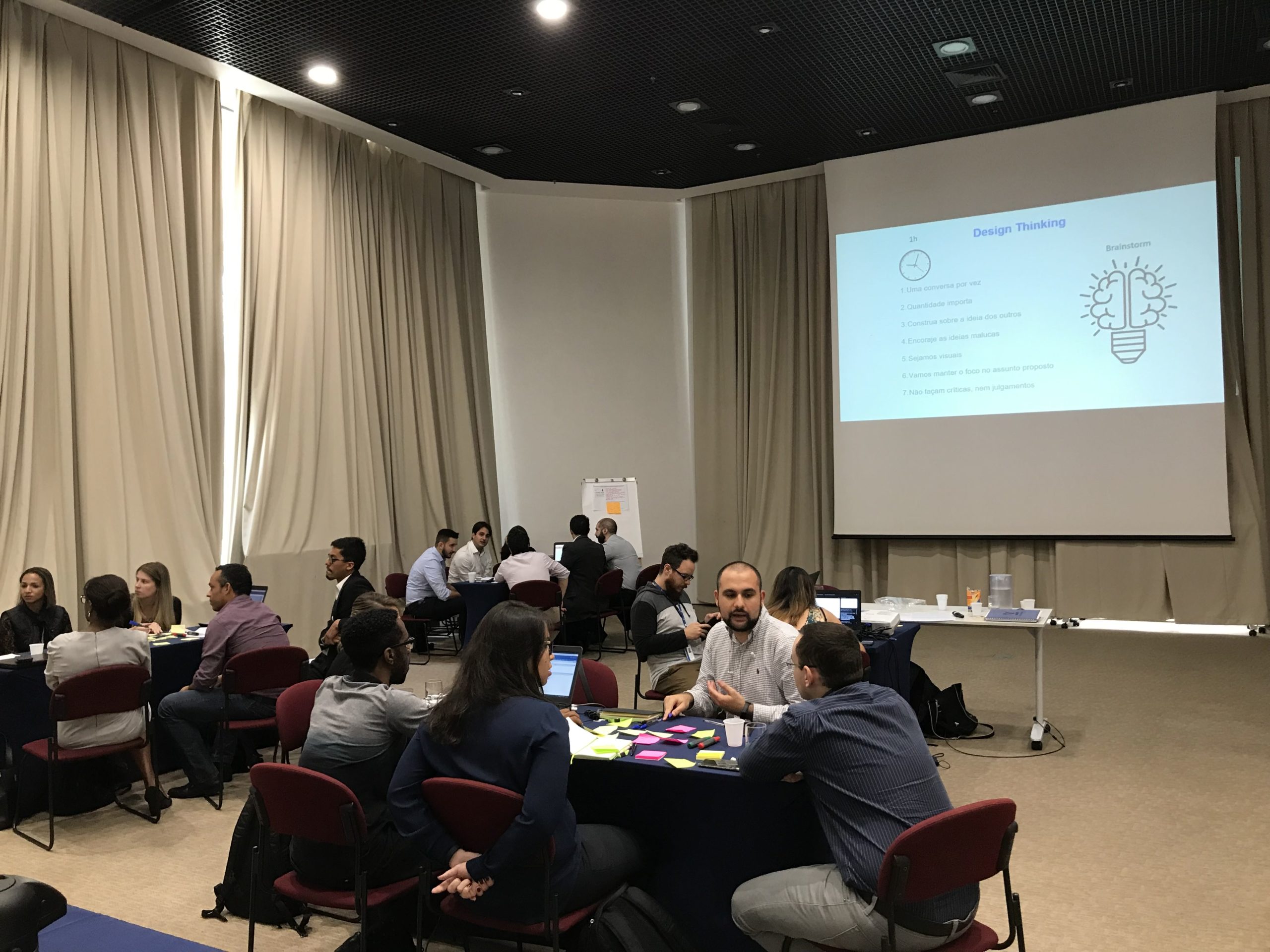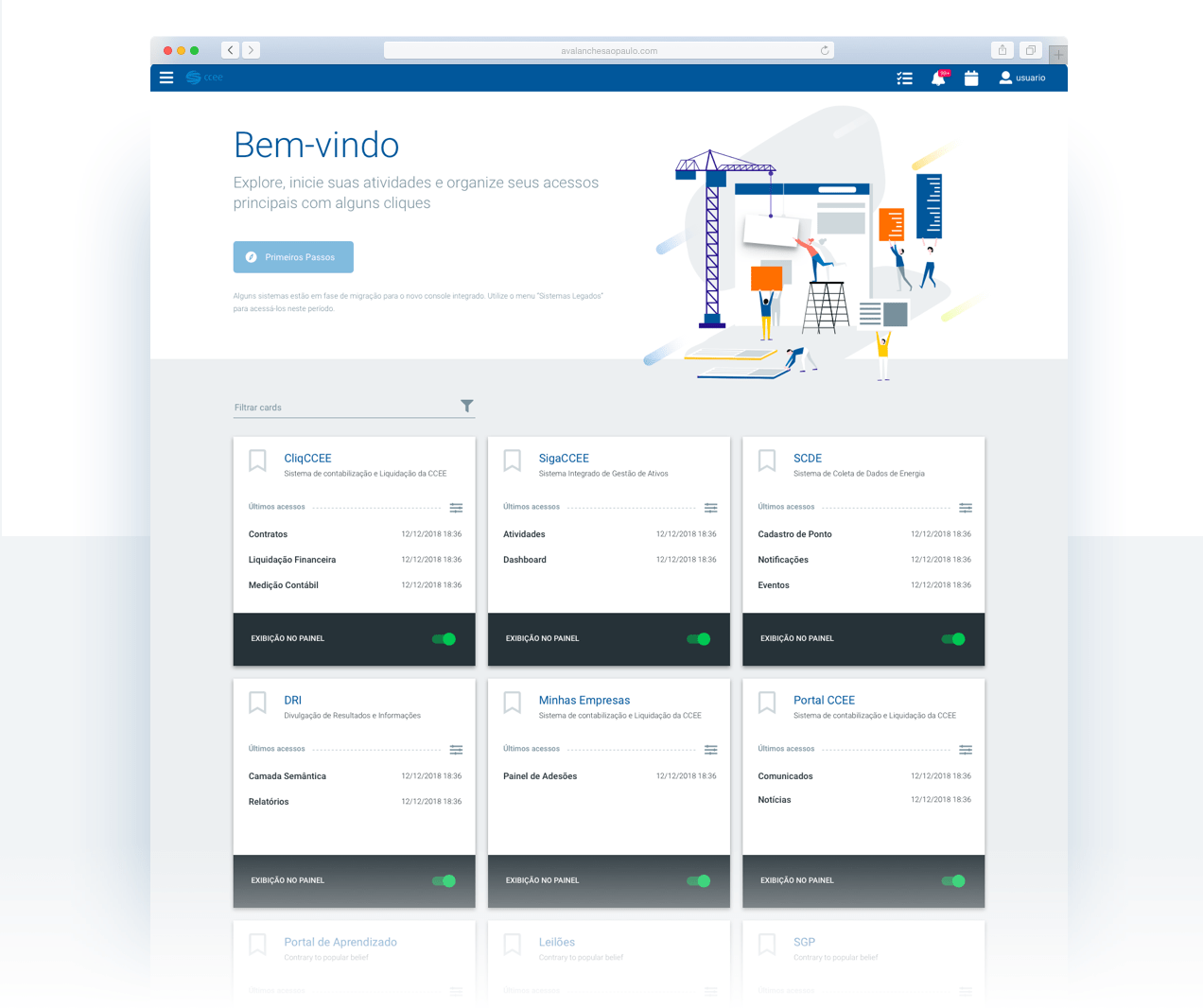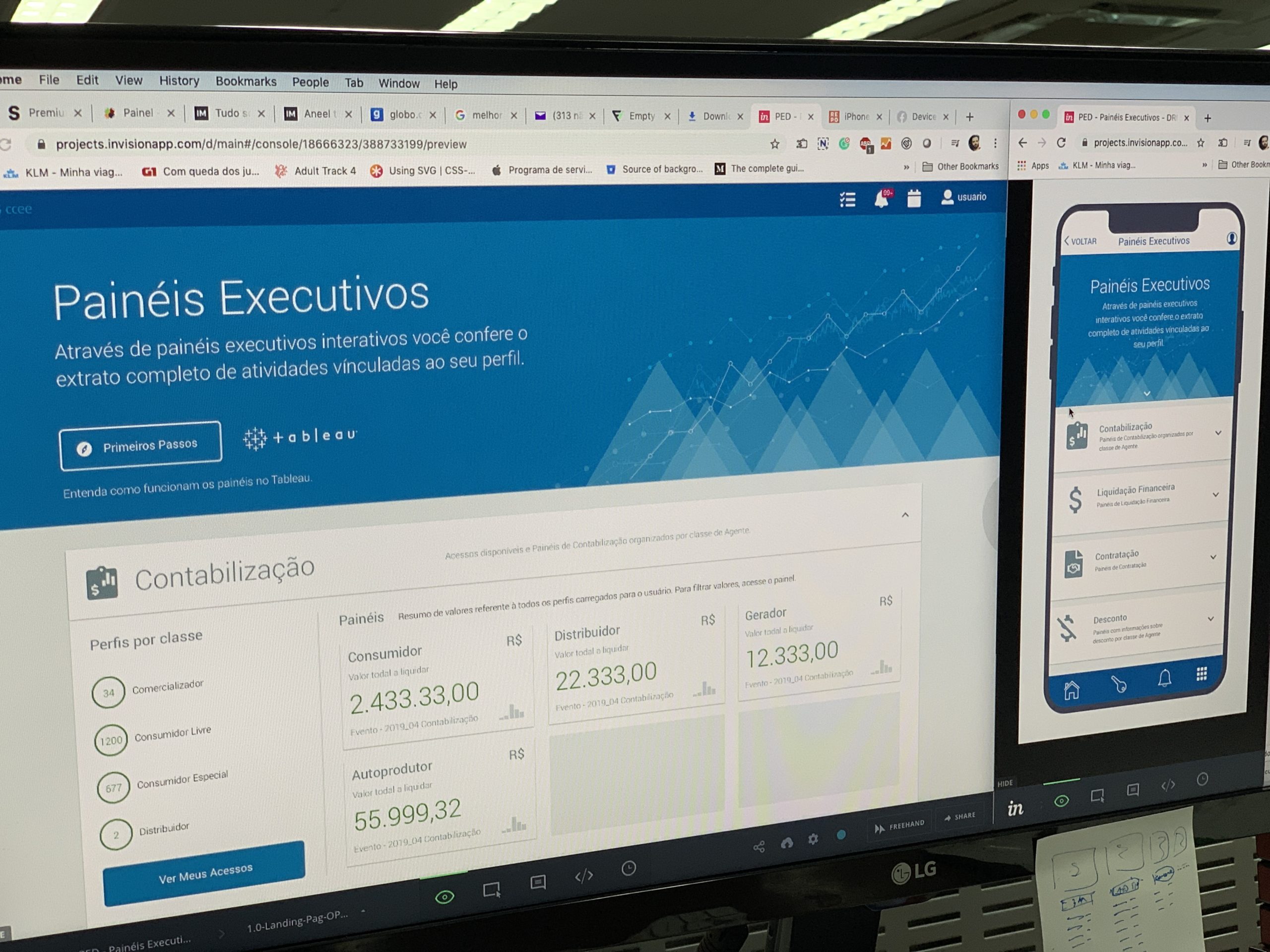Integration Platform
- Client CCEE
- Year 2018 - 2020
- Role Product Designer Lead
The CCEE is a non-profit organization responsible for registering all commercial energy contracts executed in regulated and free networks.
Between 2018 and 2020 I led a UX design team in the construction of the Cockpit digital product. A platform that would unify the experience of legacy systems and review the entire software architecture.
Co-design
As part of our approach, we combined interviews with real-time navigation data collection through Real User Monitoring (RUM). We have analyzed the navigation and interaction behavior of both legacy and new systems over the past 24 months.
Digital Experience Transformation
There are dozens of mobile and web-based systems that are essential for the operation of the energy market in Brazil.
From 2019 to 2020, CCEE underwent a significant digital transformation that yielded excellent results. The foundation for this change was an initiative by the company’s software architecture team to create a new digital platform that is fully dedicated to enhancing the customer experience
Design System
A significant portion of the required integration occurs through the User Interface (UI). There are numerous legacy systems, varying architectures, and front-end frameworks with outdated UI.
To achieve the desired outcome, the design team conducted a thorough inventory of the interfaces, as part of the CCEE Design System implementation project. The process began in 2018 and is currently ongoing.
As a designer, I understand that constructing a Design System involves several phases. The Discovery phase requires me to research and identify the existing design elements and patterns within our products or services, as well as gather information on our users’ needs, goals, and pain points. In the Definition phase, my team and I define the principles, guidelines, and standards that will form the foundation of our design system. We establish the design language, purpose, and principles that will guide its development.
During the Design and Development phase, I worked on designing and developing the components, patterns, and templates that make up the design system. I tried to ensuring that these components are consistent with the design principles and guidelines established in the previous phase. Once these components are designed and developed, I document them in a central location, such as a design system website or style guide, in the Documentation phase.
Finally, in the Implementation and Maintenance phase, my team and I implement the design system across all relevant products or services and maintain it over time. We monitor the system’s usage and effectiveness and continuously update it based on user feedback and changes in technology or design trends. This process allows us to create a comprehensive design system that promotes consistency, efficiency, and a better user experience across all our products and services.








